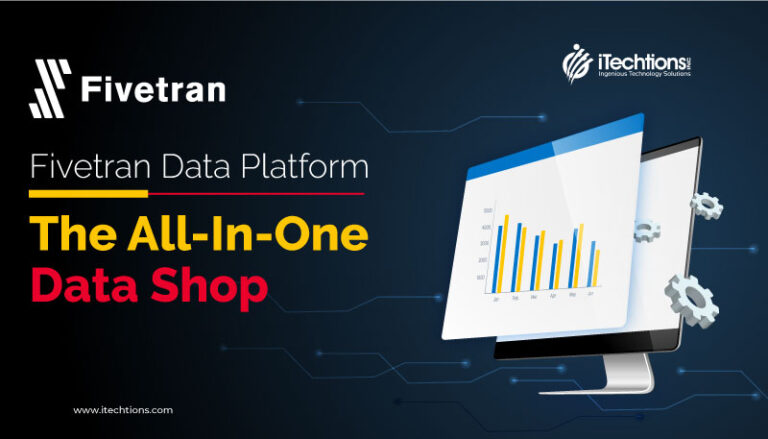Introduction
PySpark, the Python API for Apache Spark, is a powerful tool for real-time, large-scale data processing. Apache Spark, the foundation of PySpark, is an open-source, distributed computing framework designed to handle massive data sets efficiently. By using PySpark, Python users can leverage its capabilities to work with Resilient Distributed Datasets (RDDs) and perform analysis in a distributed setting. This article will delve into the various aspects of PySpark, exploring its definition, the purpose it serves as part of Apache Spark, and the benefits it offers for scalable analyses and pipelines.
Definition of PySpark as the Python API for Apache Spark
PySpark serves as the Python API for Apache Spark, allowing Python users to write Spark applications using Python code. It provides a simplified interface for working with Spark, enabling developers to leverage its capabilities without the need to resort to other programming languages. With PySpark, users can harness the power of Apache Spark’s distributed computing framework while utilizing familiar Python syntax and libraries.
Brief explanation of Apache Spark and its purpose
Apache Spark, the underlying framework for PySpark, is designed to process large-scale data efficiently. It employs parallel and batch systems to handle massive data sets by processing them in parallel, ensuring quick and accurate analysis. Spark’s versatility enables it to perform various data processing tasks, including batch processing, stream processing, machine learning, and graph processing. By offering a unified analytics engine, Apache Spark simplifies the complex task of working with diverse data sources and performing multiple operations on vast amounts of data.
Benefits of using PySpark for scalable analyses and pipelines
One of the key advantages of PySpark is its capability to run on a cluster of computers, enabling distributed data processing. By distributing tasks across multiple machines, PySpark allows for parallel computation, significantly reducing processing time for large datasets. This scalability makes PySpark an ideal choice for organizations dealing with big data as it enables efficient analysis and modeling.
PySpark also offers seamless collaboration between Python and Spark through the integration of the Py4j library. This integration allows Python to interface with JVM objects, ensuring smooth data exchange between Spark and Python. Moreover, PySpark leverages the Spark DataFrame as its primary data type, similar to dataframes in R and Pandas. The Spark DataFrame provides distributed computation functionality, eliminating the need to load the entire dataset into memory. Additionally, operations on PySpark DataFrames are recorded as a graph of transformations and applied as a single pipeline operation when the results are written back.
This optimized approach improves processing efficiency, particularly when working across a cluster of machines.
In summary, PySpark offers Python users a powerful tool for working with large-scale data through the Apache Spark framework. With its Python API, PySpark simplifies the process of
writing Spark applications in Python, enabling efficient analysis and processing of big datasets. By leveraging parallel processing and distributed computing, PySpark enables scalable analyses and pipelines, making it an essential tool for organizations dealing with the challenges of big data.
Key Features of PySpark
Overview of Resilient Distributed Datasets (RDDs) and their integration with PySpark
One of the key features of PySpark is its integration with Resilient Distributed Datasets (RDDs). RDDs are the fundamental data structures in Spark that allow for distributed computing and fault tolerance. PySpark leverages the Py4j library to interface with RDDs, enabling users to easily manipulate and process large datasets in Python. This integration allows for seamless data processing and analysis across distributed clusters, making PySpark an efficient solution for big data processing.
Introduction to Spark dataframes and their similarities to dataframes in R and Pandas
PySpark also introduces the concept of Spark dataframes, which provide a higher-level abstraction for working with structured and semi-structured data. Similar to dataframes in R and Pandas, Spark dataframes offer a tabular view of data, allowing users to perform various operations like filtering, aggregating, and joining datasets. With PySpark’s dataframe API, developers can take advantage of the expressive power of Python to perform complex data transformations and analysis tasks.
Highlighting the difference in execution method between PySpark and Pandas dataframes
While PySpark dataframes share similarities with Pandas dataframes, there is a difference in the execution method. PySpark dataframes are designed for distributed computing and therefore execute operations in a distributed manner across clusters. This allows for leveraging the parallel processing power of Apache Spark, making it well-suited for handling large-scale datasets. On the other hand, Pandas dataframes operate on a single machine and execute operations sequentially. Although Pandas is often more convenient for small to medium-sized datasets, PySpark’s distributed execution capability makes it the go-to choice for handling big data workloads.
In summary, PySpark offers several key features that make it a powerful tool for big data processing and analysis. Its integration with RDDs enables distributed computing and fault tolerance, while Spark dataframes provide a high-level abstraction for working with structured data. Furthermore, PySpark’s ability to execute operations in a distributed manner sets it apart from traditional dataframe libraries like Pandas. By leveraging PySpark’s capabilities, developers can efficiently process and analyze large datasets, unlocking insights and value from their data.
PySpark and Python Collaboration
PySpark was released to support the collaboration between Spark and Python, providing an intuitive and flexible interface for developers to utilize the powerful capabilities of Spark using the Python programming language. With the increasing popularity of Python for data analysis and machine learning tasks, PySpark allows Python developers to seamlessly integrate Spark’s distributed computing capabilities into their existing Python workflows.
One of the key components that enables the collaboration between Spark and Python in PySpark is the Py4j library. Py4j acts as a bridge between the Python interpreter and the Java Virtual Machine (JVM) where Spark runs. This integration allows for seamless communication between Python and Spark, enabling Python developers to utilize Spark’s capabilities without needing to write Java or Scala code.
In PySpark, Py4j is used to interface with RDDs (Resilient Distributed Datasets), which are the fundamental data structures in Spark. RDDs provide a fault-tolerant, distributed collection of objects that can be processed in parallel across a cluster. With Py4j, Python developers can interact with RDDs, perform various transformations and actions, and leverage Spark’s distributed computing capabilities, all within the familiar Python programming environment.
The ability to interface with RDDs in PySpark through the Py4j library provides Python developers with the flexibility and convenience to work with large-scale datasets and perform distributed data processing without needing to switch to another programming language. This collaboration between PySpark and Python not only promotes productivity for Python developers but also leverages the extensive ecosystem of Python libraries for data analysis, machine learning, and visualization.
Moreover, PySpark’s integration with Python extends beyond RDDs to other Spark components such as Spark SQL and MLlib. With Spark SQL, Python developers can perform SQL-like analysis on structured or semi-structured data, allowing them to query, transform, and analyze data using familiar SQL syntax. The integration with MLlib also enables Python developers to leverage Spark’s machine learning library, which provides implementations of various machine learning algorithms for tasks such as classification, regression, clustering, and more.
In conclusion, the collaboration between PySpark and Python through the Py4j library has unlocked the potential for Python developers to leverage the distributed computing power of Spark seamlessly. This integration allows Python developers to utilize Spark’s capabilities without the need for extensive knowledge of Java or Scala, enabling them to work with RDDs, perform SQL-like analysis, and leverage machine learning algorithms in a distributed and scalable manner, all within the Python programming environment. This collaboration has accelerated data processing and analysis tasks, empowering Python developers to tackle real-time, large-scale data challenges with ease.
Additional Libraries Compatible with PySpark
PySpark offers a variety of additional libraries that enhance its capabilities and make it a powerful tool for data analysis and processing. One such library is PySparkSQL, which enables SQL-like analysis on structured or semi-structured data. With support for SQL queries and the ability to connect to Apache Hive, PySparkSQL introduces the DataFrame concept, allowing users to work with structured data in a manner similar to a relational database table.
Another notable library compatible with PySpark is MLlib, which serves as a wrapper over PySpark and Spark’s machine learning library. MLlib provides a wide range of machine learning algorithms, including those for classification, regression, clustering, collaborative filtering, dimensionality reduction, and optimization primitives. By leveraging MLlib, users can easily perform complex machine learning tasks within the PySpark environment, making it a valuable asset for data scientists and analysts.
While PySpark’s additional libraries offer great functionality and utility, it is important to note that there is some disagreement among sources regarding which libraries are officially supported and recommended by the PySpark community. Some sources may include libraries like GraphFrames, which is a graph processing library that provides APIs for efficient graph analysis using PySpark core and PySparkSQL. This library is optimized for fast distributed computing and can be a valuable tool for those working with graph data.
In conclusion, PySpark’s additional libraries expand its capabilities and provide users with powerful tools for data analysis, machine learning, and graph processing. While PySparkSQL and MLlib are widely acknowledged as valuable libraries that enhance PySpark’s functionality, there may be differences in the lists of recommended libraries among different sources. It is always beneficial to explore and experiment with these libraries to find the ones that best suit your specific use case and requirements.
Use Cases for PySpark
For data scientists, PySpark simplifies the process of working with large datasets by allowing them to leverage the familiar Python programming language. This eliminates the need for learning a new language and speeds up development time. Moreover, PySpark provides advanced analytics capabilities through its Spark SQL and MLlib libraries. These functionalities enable data scientists to perform complex data manipulation, exploration, and machine learning tasks on massive datasets with ease.
Software developers also greatly benefit from PySpark’s capabilities. Its ability to process large volumes of data in parallel across a cluster of machines makes it ideal for handling big data workloads. PySpark’s distributed computing model, based on RDDs, allows for scalable and fault-tolerant data processing, ensuring uninterrupted performance even when dealing with massive datasets. Additionally, PySpark offers excellent support for real-time data processing through its Streaming module, enabling developers to build applications that process and analyze data in near real-time.
The ease of use provided by PySpark is another reason for its popularity among data scientists and developers. With its simple and intuitive Python API, users can quickly write and execute complex data processing tasks without the need for low-level programming. This ease of use also extends to the management of Spark clusters, as PySpark simplifies the deployment and configuration of Spark instances.
PySpark’s seamless integration with other tools further enhances its utility. It can effortlessly connect with popular data storage and processing technologies like Hadoop Distributed File System (HDFS), Apache Hive, and Apache Cassandra. This interoperability allows data scientists and developers to leverage existing infrastructure and access data from various sources, enabling comprehensive and integrated data analysis.
In conclusion, PySpark offers a multitude of use cases for data scientists and software developers working with big data. Its seamless integration with Python, scalability, performance, ease of use, and compatibility with other tools make it a powerful choice for processing and analyzing large datasets. Whether it’s performing advanced analytics, building real-time applications, or integrating with existing data systems, PySpark provides the necessary tools and functionalities to tackle the challenges of big data effectively.
Final Thoughts
In conclusion, PySpark is a powerful tool for real-time, large-scale data processing and analysis. With its Python API, PySpark allows Python users to leverage the capabilities of Apache Spark without the need to learn new programming languages. By utilizing distributed computing and parallel processing, PySpark enables scalable analyses and pipelines, making it an essential tool for organizations dealing with big data. Additionally, PySpark’s integration with Python and its compatibility with other tools enhance its utility and ease of use. Overall, PySpark empowers data scientists and software developers to efficiently process and analyze large datasets, unlocking valuable insights and driving innovation in the field of data analytics.









